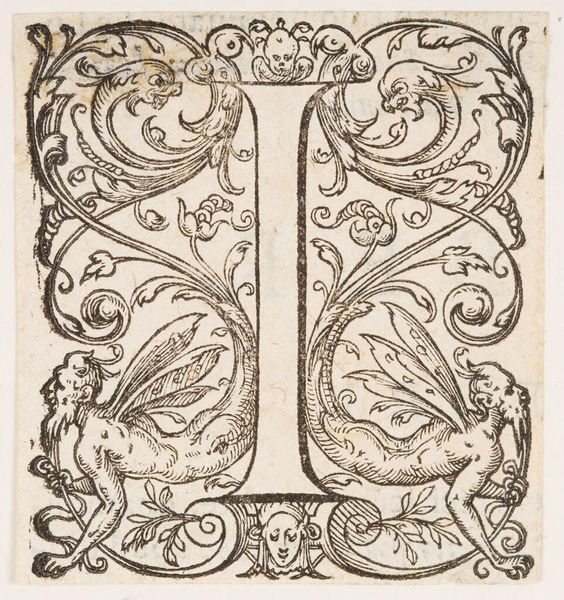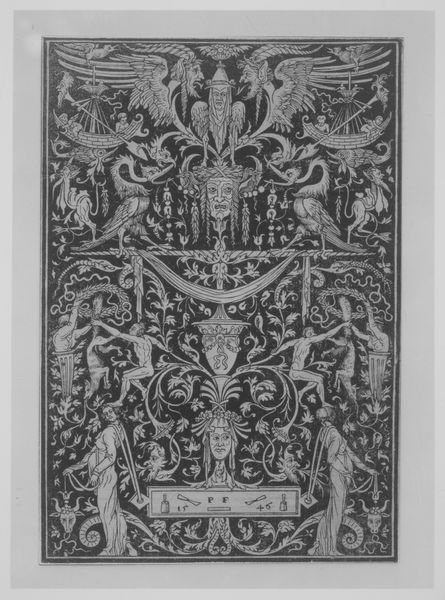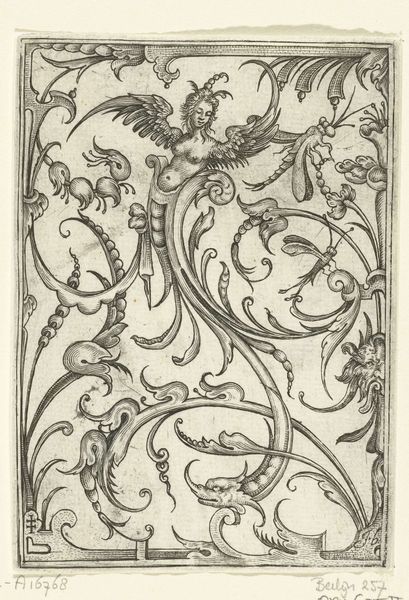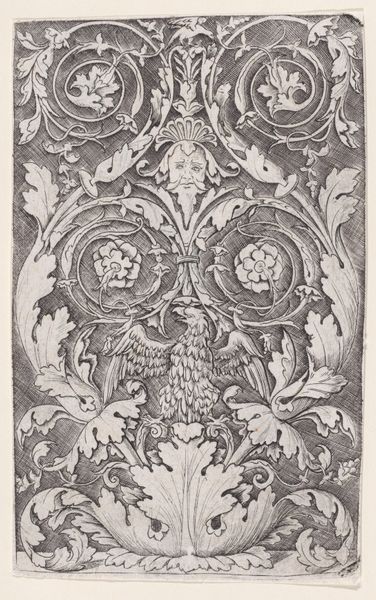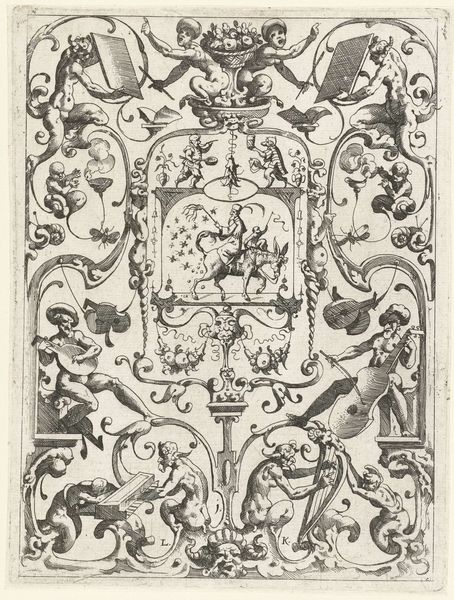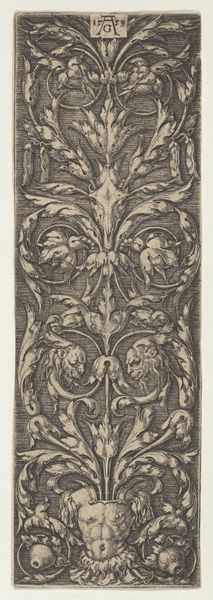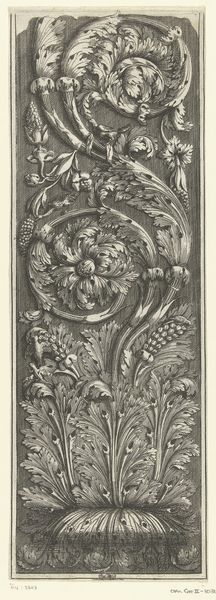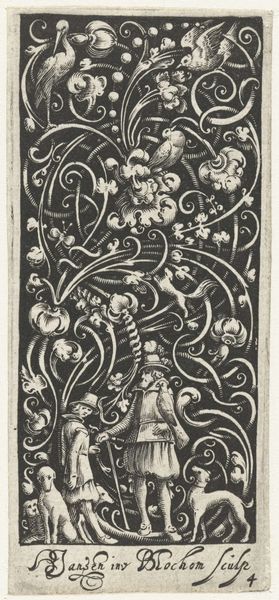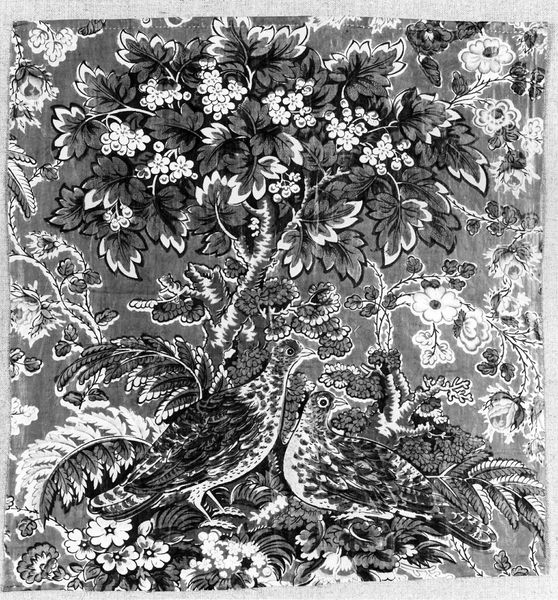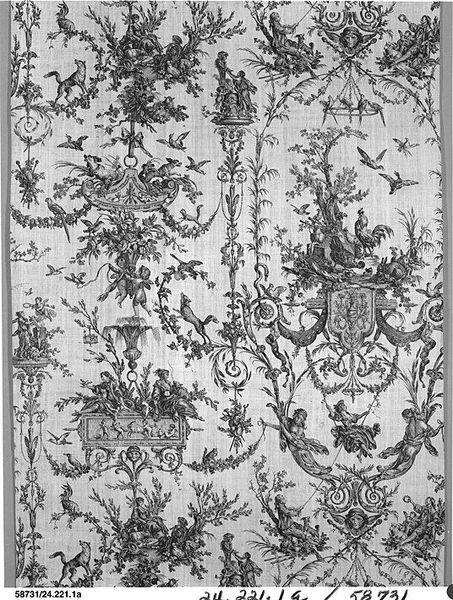
drawing, print, engraving
#
drawing
#
organic
# print
#
11_renaissance
#
geometric
#
intricate pattern
#
line
#
engraving
Dimensions: sheet: 9 1/16 x 6 1/8 in. (23 x 15.6 cm)
Copyright: Public Domain
Curator: Welcome, everyone. Today, we'll be examining Daniel Hopfer's "Ornamental Fillet with Thistle Motifs," an engraving created sometime between 1510 and 1528. It’s currently housed at the Metropolitan Museum of Art. Editor: Intricate, isn't it? My initial reaction is a sense of overwhelming density; a captivating interplay of botanical forms rendered with astonishing precision. Curator: Precisely. The composition achieves dynamism through the meticulous arrangement of thistle motifs, intertwining with geometric shapes, fostering both rhythm and visual equilibrium. The contrast in light and shadow produced by the engraving technique creates further visual interest, guiding the viewer's gaze throughout the elaborate composition. Editor: Thinking about Hopfer's process… Consider the physical labor of meticulously carving into a metal plate. How much planning was required, to predict the reversed image, the precise depths for the varying lines… It’s really an intense mediation between hand, tool, and material. Curator: Yes, and that physicality has theoretical ramifications. We see in it the influence of linear perspective to create a controlled field where the symbolic vocabulary of the thistle, as emblem of both royalty and suffering, may be decoded with purpose. Note how the inclusion of birds perched amongst these thistles introduces another level of meaning; symbols of freedom and perhaps the soul. Editor: What interests me is less the symbolic readings, and more the social circulation of these prints. Ornamentation like this wasn't just about aesthetics; it directly impacted craft practices. Blacksmiths, textile workers, all could draw inspiration, scale these patterns into their objects, transforming how things looked and were made throughout the early 16th century. It speaks volumes about the accessibility and functional relevance of art. Curator: A crucial point; utility is inseparable from aesthetics. The linear precision creates an ideal system to both produce and understand how such geometric/botanical forms are applied and appreciated. Editor: To sum, for me this isn’t solely an artwork to be analyzed but as a testament to material engagement across different tiers of society during the Renaissance. Curator: Indeed, Hopfer offers us an exercise in deciphering layered construction from geometric abstraction to botanical representation; from manual labor to royal court.
Comments
No comments
Be the first to comment and join the conversation on the ultimate creative platform.
